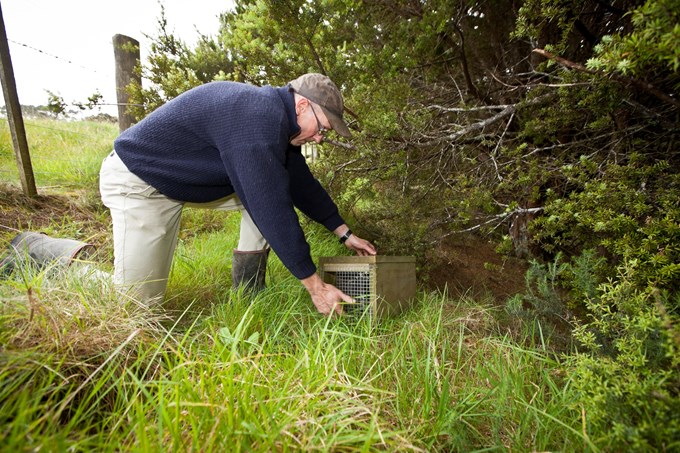Trapping and capturing pests makes a big difference to our environment.
By reducing the number of pests in your local area you can help to protect birds nesting in your trees from rats, save your fruit trees and flowers gardens from hungry possums and help to protect nearby areas of bush and their inhabitants.
There are a lot of different pests around, and it’s important to decide what pests you want to get rid of. Rats are a big problem in most parts of New Zealand, and, depending on where you are, possums, stoats, ferrets and weasels may be as well.
Take a look at this video for some tips on trapping rats in your garden:
If you're keen to help out and get started trapping, check out our tips for beginners below:
-
Know your enemy
Keep an eye out for pest animals. You can identify what animals may be in or around your property by the damage signs they leave behind or what they eat.
If you think you have a pest on your property, head to pestdetective.org.nz to search by clues or culprits.
Visit this council webpage for information on identifying pests.
-
Choose your weapon
Once you’ve identified the pest you want to control, you’ll need to invest in some hardware. The pest you’re aiming for might be a predator but still needs to be dealt with humanely.
Predator Free NZ has some great advice about what trap to choose. Some are harder than others to set and you need to consider their effectiveness and humaneness and feel confident using them too.
Find out more about getting the best traps and trapping techniques.
Tackling the possum problem
The possum is one of the earliest species introduced (1837) into New Zealand for the fur trade and there are now over 30 million across the country. The possum does an inordinate amount of damage to our forests and is one of the top three pests targeted for eradication.
If you've decided to take on your local possum problem, take a look at these tips too:
- Possums are inquisitive, attracted to bright colours which is why traps are generally yellow
- Items to have on hand: trap, gloves, notebook to keep a record of where and how many you catch, knife and bait cut into pieces
- Place trap at base of trees possum like – native trees with berries like totara and pine or citrus
- Dispose of possums by burying them in the garden or placing in the household rubbish
-
Pick your moment
Timing is important – winter, late spring, early summer and early autumn are the best times to focus your efforts once you have done some initial trapping and have an idea of the size of the problem.
-
Keep count
Keep a record of your results.
If you record what you’ve been doing, you can refer back to it over time and decide whether you need to change anything. Record things like numbers caught, placement of the trap, bait used (peanut butter is good, but not always) or how often you check, clear and re-set the trap.
To know if you’re being successful, note any changes – like if you’ve seen more birds in the garden, your fruit is being eaten less, or your neighbours aren’t complaining about rats in their compost anymore. If your neighbours are also doing some trapping, compare notes with them and see if you can work together.
For any questions on trapping, email biosecurity@aucklandcouncil.govt.nz


